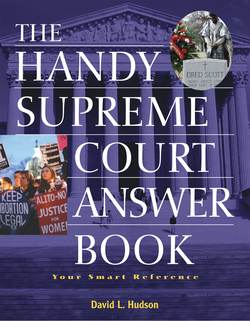Читать книгу The Handy Supreme Court Answer Book - David L Hudson - Страница 48
What is the role of the American Bar Association in the Supreme Court nomination/confirmation process?
ОглавлениеWith more than 400,000 members, the American Bar Association is the largest professional trade association of lawyers. It has played a significant role in the U.S. Supreme Court (and lower federal courts) confirmation process. The ABA participates through its 15-member Standing Committee on Federal Judiciary.
From 1952 to 2001, the presidents of the United States would consult with the Standing Committee regarding proposed nominees. For example, President Gerald Ford sought the committee’s views on numerous candidates before finally nominating Justice John Paul Stevens in 1976. Since 1948, the Committee has provided the U.S. Senate Judiciary Committee with evaluations of every federal judicial nominee.
In March 2001, President George W. Bush took a different stance. Alberto Gonzales, counsel to the president, wrote a letter to the ABA, saying that the White House would no longer use the Standing Committee as a pre-screening mechanism before selecting judicial nominees. Gonzales wrote in part:
Size of the Court
| 1789–1807: 6 justices | 1863–66: 10 justices |
| 1807–37: 7 justices | 1866–69: 7 justices |
| 1837–63: 9 justices | 1869–present: 9 justices |
The question, in sum, is not whether the ABA’s voice should be heard in the judicial selection process. Rather, the question is whether the ABA should play a unique, quasi-official role and thereby have its voice heard before and above all others. We do not think that kind of preferential arrangement is either appropriate or fair.
It would be particularly inappropriate, in our view, to grant a preferential, quasi-official role to a group, such as the ABA, that takes public positions on divisive political, legal, and social issues that come before the courts. This is not to suggest that the ABA should not adopt policy positions or express its views. But considerations of sound constitutional government suggest that the President not grant a preferential, quasi-official role in the judicial selection process to a politically active group.
However, the Senate Judiciary Committee asked the ABA Standing Committee on the Federal Judiciary to continue reviewing those nominated for federal judgeships. And the White House still used the ABA’s recommendation of “highly qualified” for nominee Samuel Alito Jr. in arguing that he should be confirmed. The ABA’s ratings of “highly qualified,” “qualified,” and “not qualified” still carry great weight in the legal profession.
